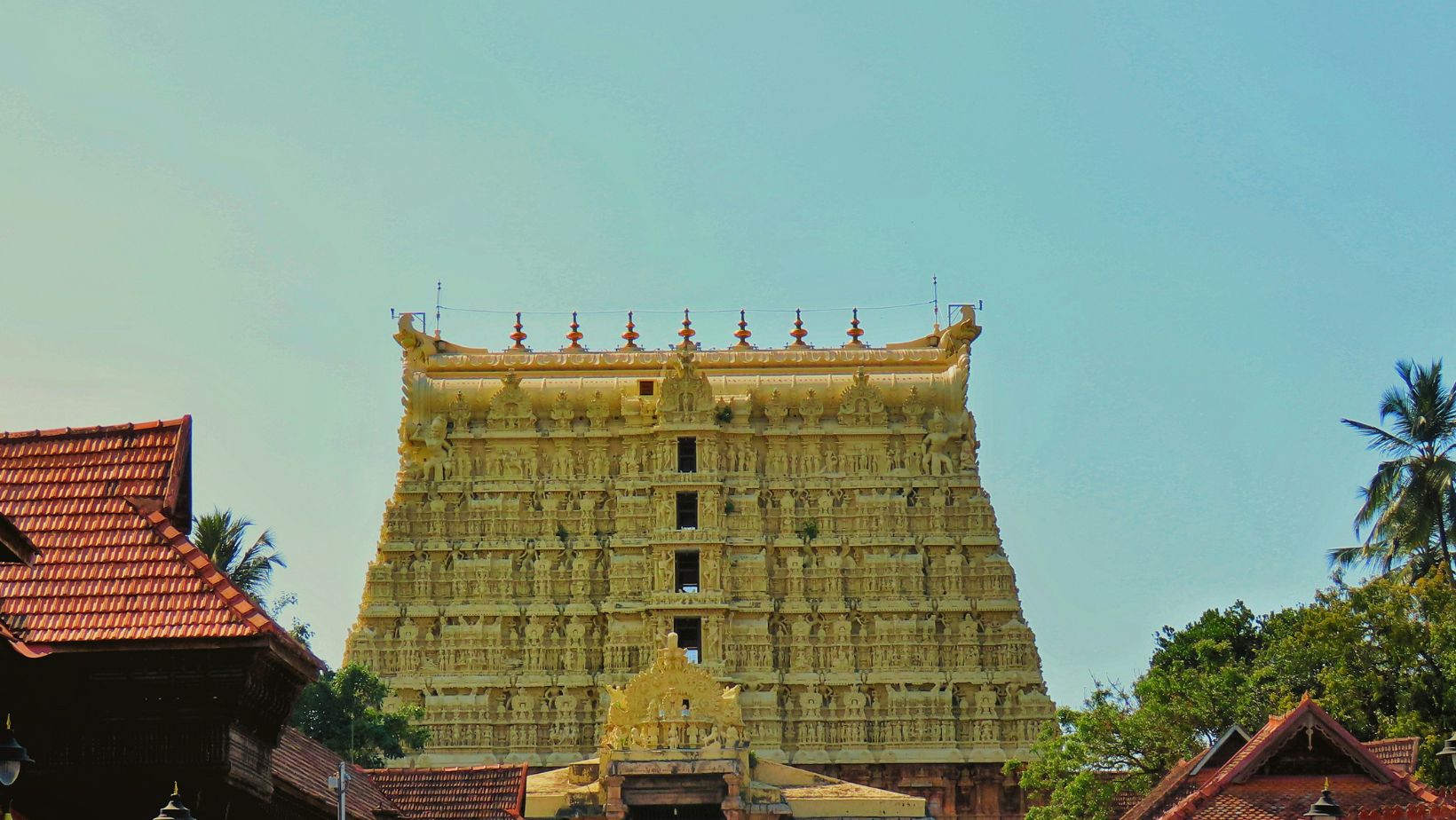The Brihadeeswara Temple stands majestically in Thanjavur, Tamil Nadu. Built by the Chola emperor Raja Raja I in 1010 AD, it reflects grandeur and architectural excellence. Dedicated to Lord Shiva, the temple symbolizes cultural heritage and spiritual devotion. Visitors worldwide marvel at its towering vimana and intricate sculptures. Recognized by UNESCO as a World Heritage Site, this temple showcases ancient India’s impressive artistry and engineering skills.
Historical Background
Origin and Construction
Construction began in 1003 AD and concluded in 1010 AD. Raja Raja Chola I aimed to honor Lord Shiva and display the empire’s wealth. Thousands of laborers and artisans worked tirelessly to complete this monumental structure within seven years. Historical inscriptions detail the temple’s construction process and dedication ceremonies.
Significance During the Chola Period
The Brihadeeswara Temple served as a center of religious and social activities during the Chola reign. Kings patronized this temple, conducting elaborate rituals and cultural events. It also functioned as an economic hub, generating employment and trade through festivals and rituals.
Later Developments and Restorations
Over centuries, subsequent dynasties contributed to its preservation and restoration. Nayakas and Marathas undertook significant renovation works, adding their cultural imprint. Restoration by the Archaeological Survey of India in modern times ensures the temple remains a timeless architectural wonder.
Architectural Excellence
Layout and Structure
The temple’s rectangular complex spans over 240 meters by 120 meters. Fortified walls surround the complex, housing shrines, corridors, and pillared halls. Entry gateways, called gopurams, display exquisite carvings and lead visitors to the central courtyard.
Vimana: The Iconic Tower
Standing over 66 meters high, the vimana dominates the temple’s skyline. Carved from a single granite block, the massive capstone weighs approximately 80 tons. Intricate carvings adorn its surface, showcasing scenes from Hindu mythology and Chola history.
Mandapas: Halls of Worship
Several mandapas within the complex host rituals and prayers. The Mukha Mandapa, Maha Mandapa, and Ardha Mandapa feature detailed pillars and sculptures. These halls represent architectural harmony and spiritual sanctity.
Sculptural Masterpieces
The temple houses exquisite sculptures depicting Hindu gods, goddesses, and mythological narratives. Sculptures of Shiva, Parvati, Vishnu, and Ganesha stand out prominently. Artistic finesse and detailing demonstrate the sculptors’ superior craftsmanship.
Spiritual and Religious Importance
Main Deity: Lord Shiva
The temple enshrines a massive Shiva Lingam measuring over 3.7 meters. Devotees revere this sacred Lingam, believing it radiates divine energy. Daily rituals and prayers sustain the temple’s spiritual aura.
Festivals and Celebrations
Major festivals like Maha Shivaratri and Aipassi Thiruvizha attract thousands of devotees. Celebrations feature processions, rituals, music, and dance performances. These festivals reinforce community spirit and religious devotion.
Pilgrimage Significance
The Brihadeeswara Temple draws pilgrims from across India and abroad. Devotees believe visiting this temple grants blessings, prosperity, and spiritual upliftment. Pilgrimage tours often include this temple due to its historical and religious importance.
Artistic Highlights
Frescoes and Murals
Ancient frescoes adorn the temple walls, depicting scenes from Shiva’s life and Chola royalty. These colorful paintings provide valuable insight into the lifestyle and beliefs of the period. Preservation efforts maintain their vibrancy and beauty.
Inscriptions and Epigraphy
Over 100 inscriptions line the temple walls, chronicling historical events, grants, and donations. These inscriptions in Tamil and Sanskrit help scholars reconstruct Chola history and governance structures. Epigraphists regularly study and preserve these valuable records.
Dance and Music Traditions
The temple historically nurtured classical arts like Bharatanatyam and Carnatic music. Performances held in temple premises celebrated religious and cultural narratives. This tradition continues today through cultural events and festivals.
Technological Marvel
Engineering Techniques
Builders employed innovative engineering techniques to construct the temple without advanced machinery. Skilled artisans precisely aligned the structures, using ramp and pulley systems. Granite blocks, transported over long distances, exemplify exceptional logistical planning.
Astronomical Alignment
The temple aligns astronomically, with sunlight illuminating specific areas during solstices. Such precise alignment indicates advanced astronomical knowledge among Chola architects. Researchers continuously study these phenomena to understand ancient astronomical practices.
Cultural Legacy
UNESCO World Heritage Status
UNESCO designated the temple a World Heritage Site in 1987, recognizing its outstanding universal value. This status enhances global awareness and attracts international tourists. Conservation efforts receive support from global organizations, ensuring preservation.
Influence on South Indian Architecture
The Brihadeeswara Temple significantly influenced later South Indian temple architecture. Features like towering vimanas, mandapas, and detailed sculptures became standard elements. Many subsequent temples emulate its design principles and stylistic elements.
Tourism and Economy
Tourism around the Brihadeeswara Temple significantly boosts Thanjavur’s economy. Hotels, restaurants, handicraft shops, and local guides benefit from increased tourism activity. Cultural tourism also promotes local arts and traditional handicrafts.
Visitor Information
Best Time to Visit
Visitors enjoy the temple best between October and March due to favorable weather. Early mornings and evenings provide optimal conditions for exploration and photography. Festivals offer additional cultural experiences and lively atmospheres.
Accessibility and Transportation
Thanjavur connects easily by road and rail to major cities like Chennai and Trichy. The nearest airport, Tiruchirappalli International Airport, lies about 60 kilometers away. Public transport and private taxis readily facilitate temple visits.
Facilities and Amenities
The temple provides essential amenities such as drinking water, restrooms, and seating areas. Nearby accommodation options range from luxury hotels to budget guesthouses. Numerous restaurants nearby offer local South Indian cuisine.
Guidelines for Visitors
Visitors should dress modestly, respecting local customs and religious sentiments. Photography may require permission, particularly in inner sanctums. Removing shoes before entering the temple premises remains mandatory.
Challenges and Preservation Efforts
Environmental Threats
Pollution and climate change threaten the temple’s structural integrity and artwork. Air pollution, humidity, and rainfall gradually degrade sculptures and murals. Regular monitoring and preventive measures address these environmental concerns.
Preservation Initiatives
Governmental and non-governmental organizations collaborate on temple preservation projects. Restoration techniques use traditional methods and modern technologies to maintain authenticity. Continuous funding and skilled workforce remain crucial for effective preservation.
Public Awareness Campaigns
Awareness programs educate visitors and locals about the importance of temple preservation. Workshops, exhibitions, and media outreach efforts emphasize cultural heritage conservation. Community involvement ensures sustained efforts towards temple maintenance.
The Brihadeeswara Temple stands as a magnificent testament to Chola artistry, spirituality, and innovation. Its historical, cultural, and religious significance continues to inspire visitors and scholars. Protecting this architectural gem remains a shared responsibility, ensuring its legacy endures for future generations.











**mind vault**
mind vault is a premium cognitive support formula created for adults 45+. It’s thoughtfully designed to help maintain clear thinking
**breathe**
breathe is a plant-powered tincture crafted to promote lung performance and enhance your breathing quality.